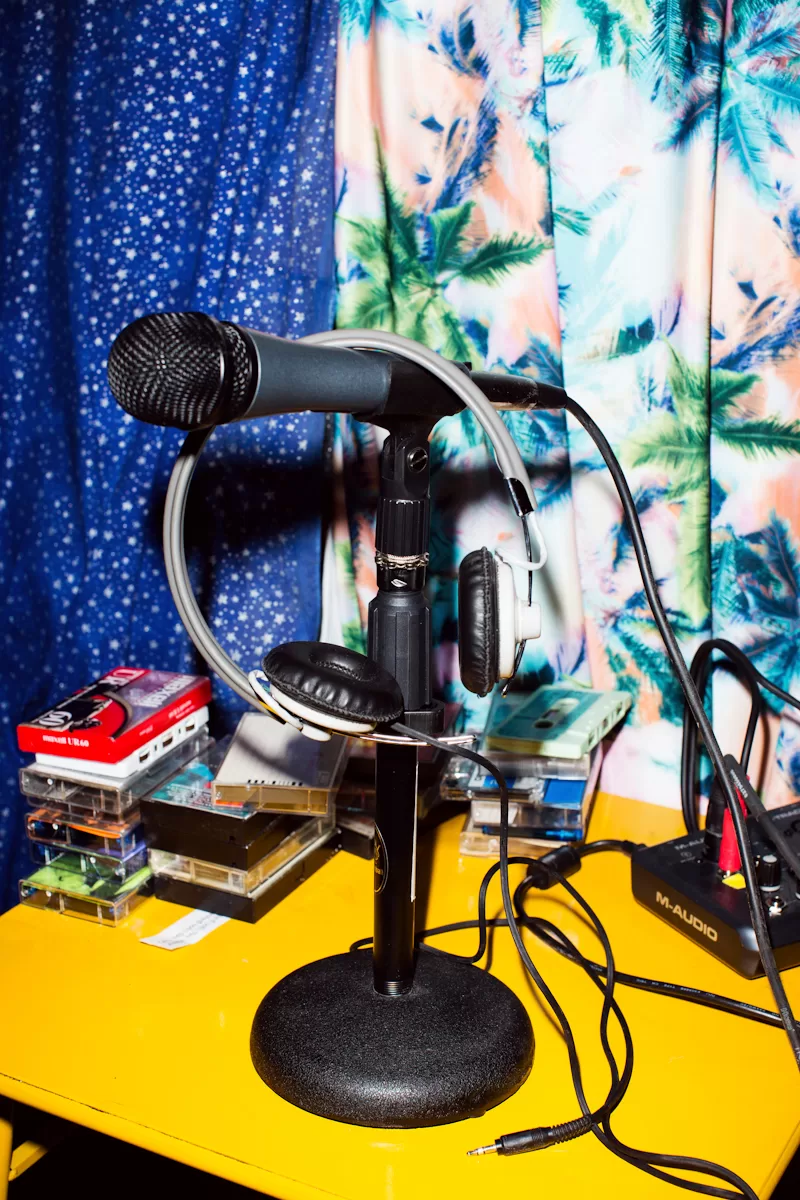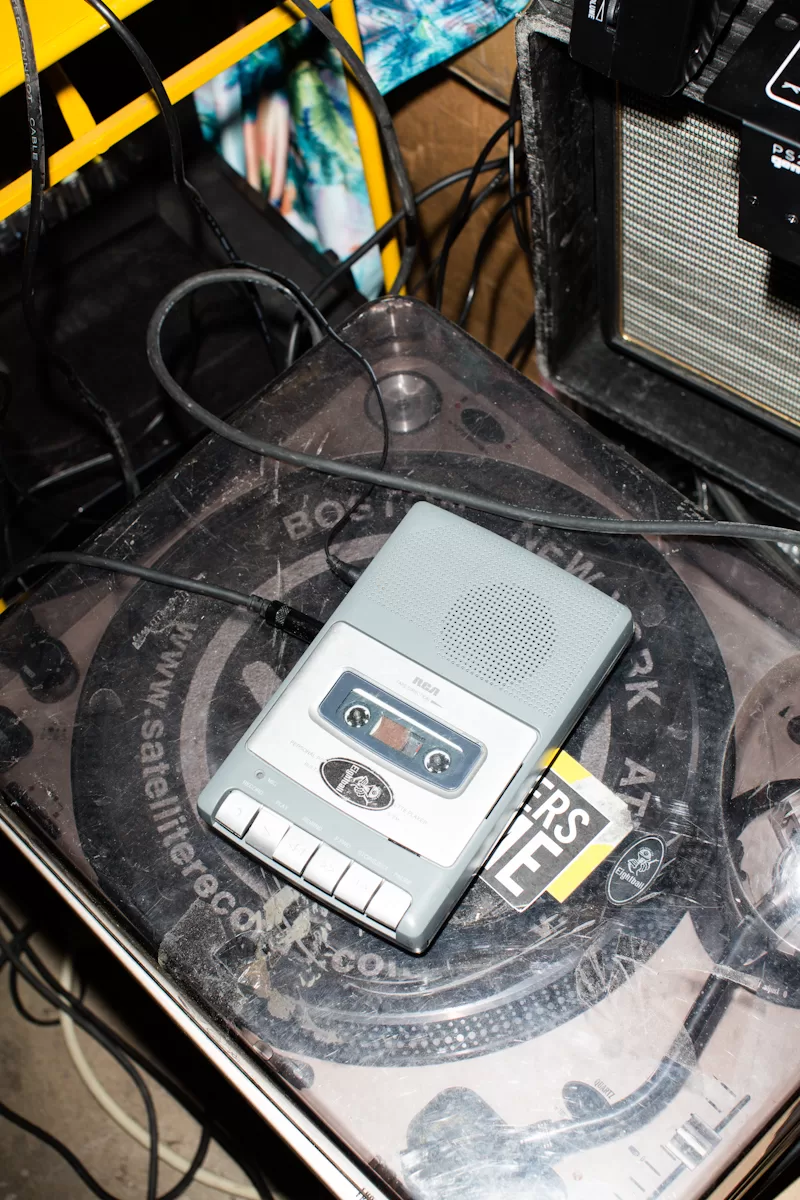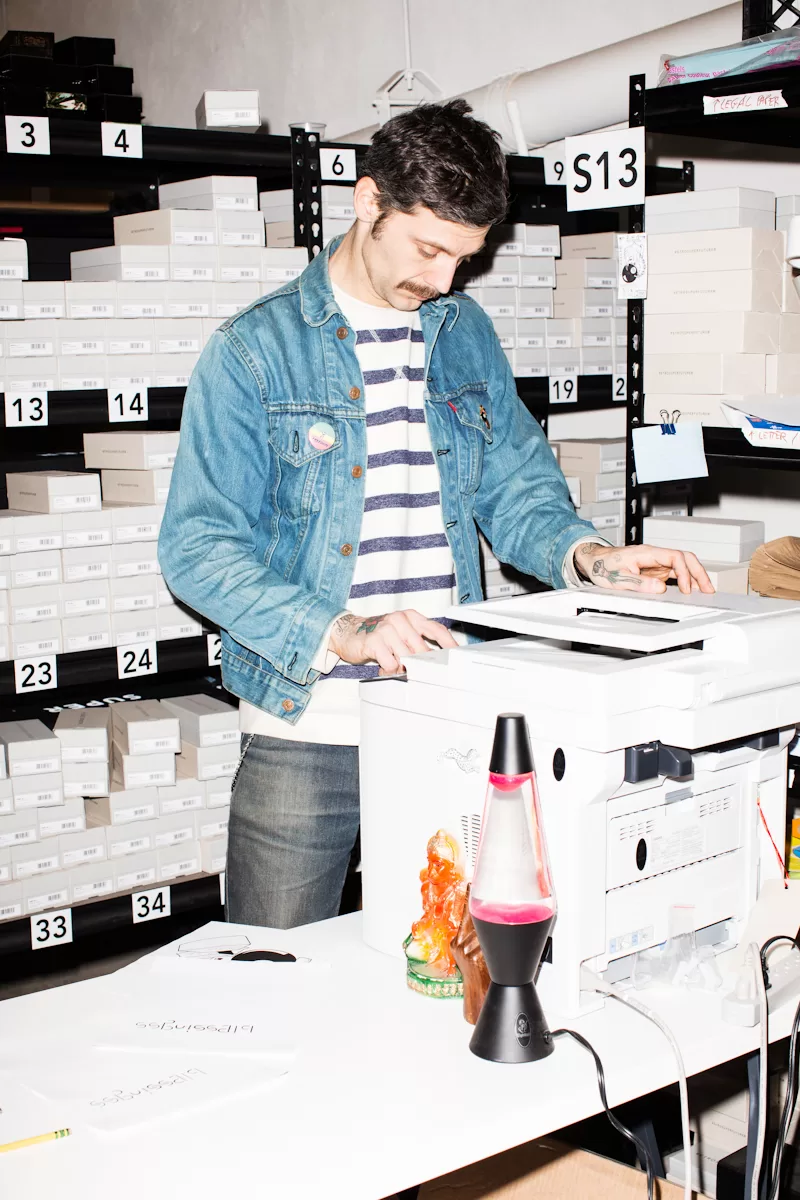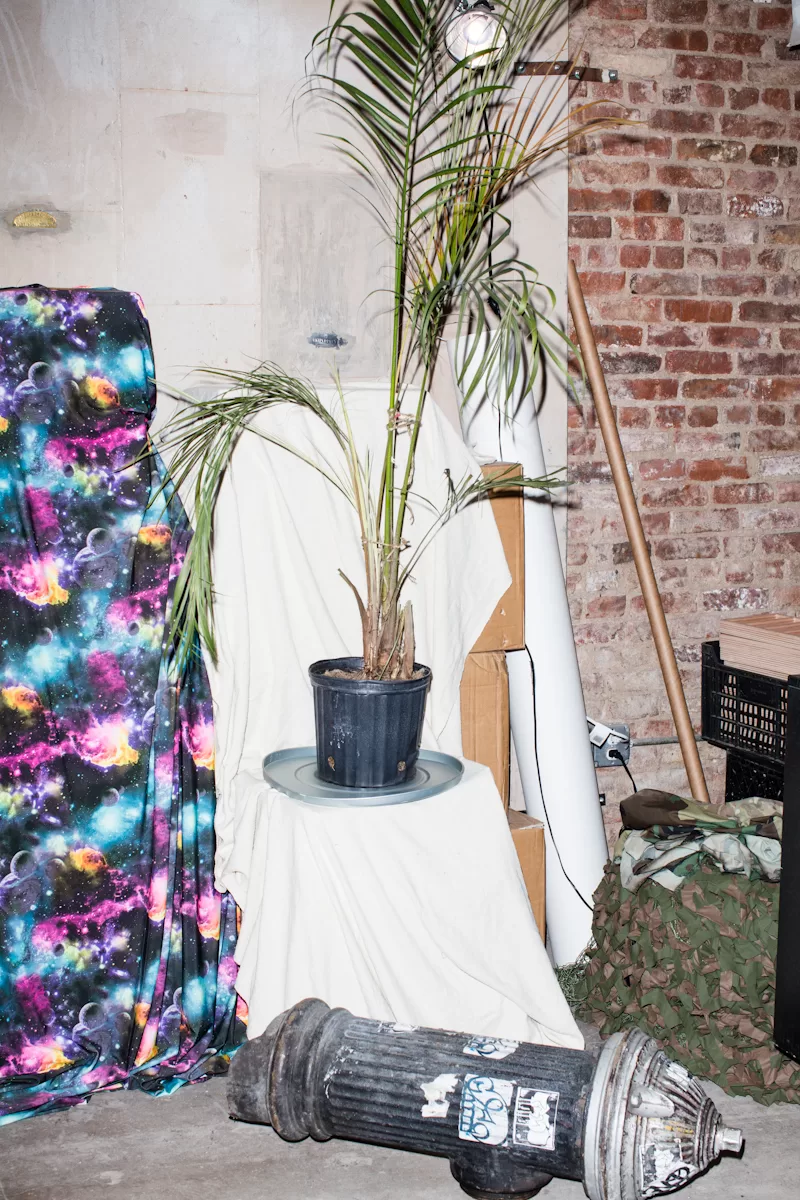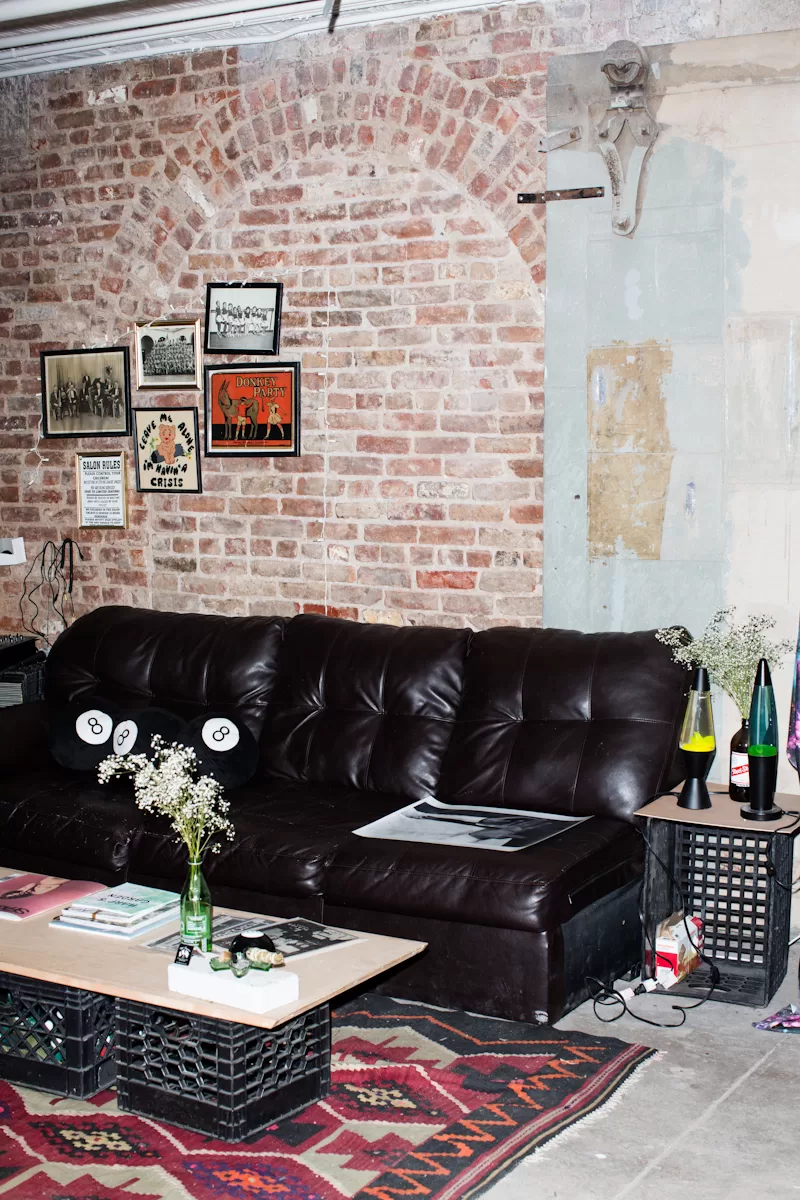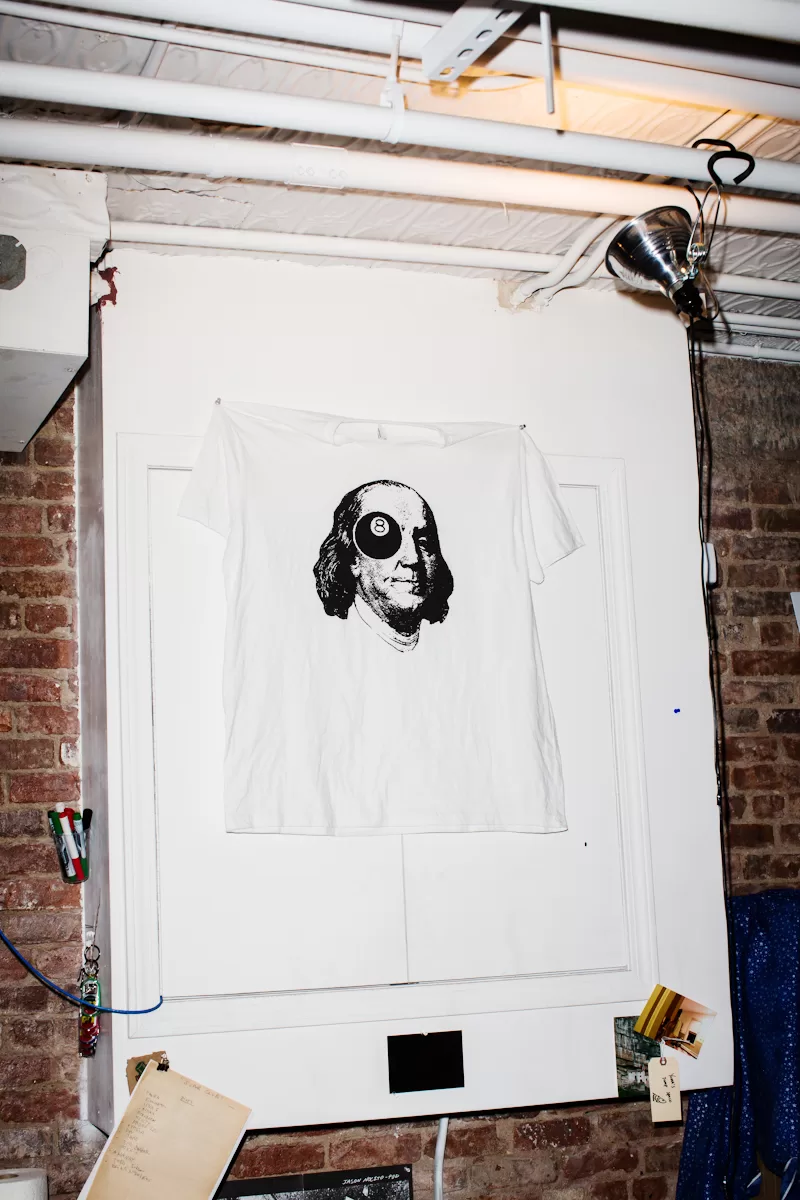Studio Visit: Lele Saveri
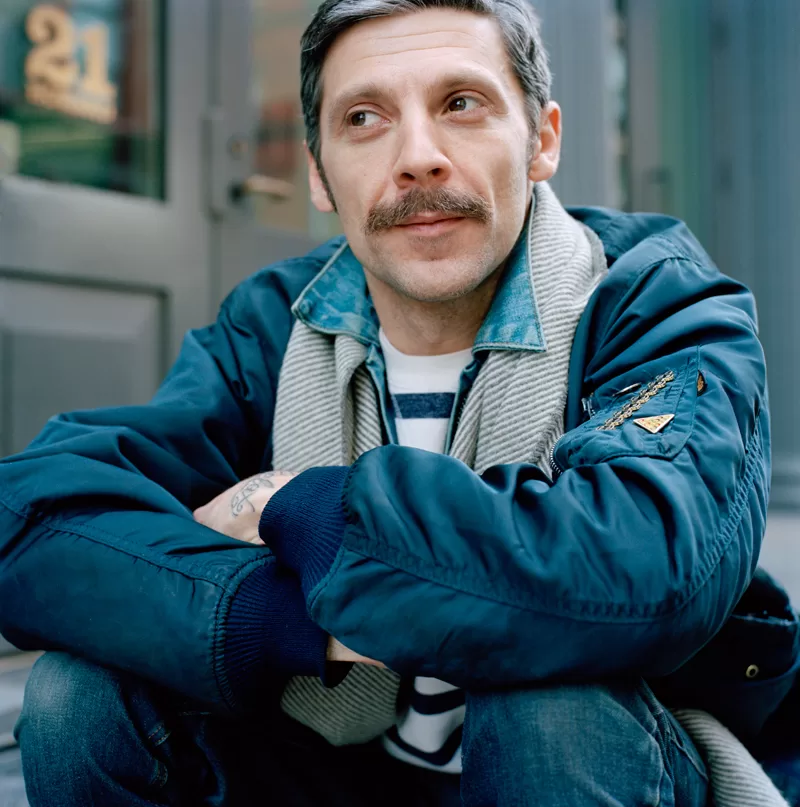
I am skeptical in talking about Lele Saveri just as a photographer. Sure, when he was living in London photography was his first love and what paid his bills. He worked as a photographer for many years, becoming part of the first work-team at Vice Italia. But then he moved to New York and somehow everything changed. Even though photography is still very much part of who he is, he now understands that the real nature of what he has done so far lies in his ability and willingness to bring people together, creating communities; starting a dialogue. And this is something that is really hard to find in American cities and in particular in places like New York City, where feeling lonely and isolated is such an easy space to find yourself in. 8ballzine is Lele’s creation and under this name he brought together a series of projects he has been working on since the first day he moved to the Big Apple. Every single one of these is born from the certainty that we are nothing without a community.
Where is your studio and how long have you been here for?
Right now my studio is located in Lower Manhattan on Howard Street. I just moved here in January, before that I had a gallery in Brooklyn. It was a storefront in East Williamsburg/ Bushwick so it was really different from here. I’d been in that space for a year and then the landlord decided not to renew the lease and so I had to move out.
Why wouldn’t he renew the lease?
The main reason was because he thought that me and my partner were going to open a commercial gallery space, you know, with openings every month and artworks for sale hung on white walls. And Muddguts (the name of the space) was actually quite the opposite of that. It was almost a community centre, a workshop place with a program that would change every week and the goal of involving neighbours and people from all over Brooklyn. This is actually the core of everything I do; I want to generate something that can help and support the concept of community, in a broad sense.
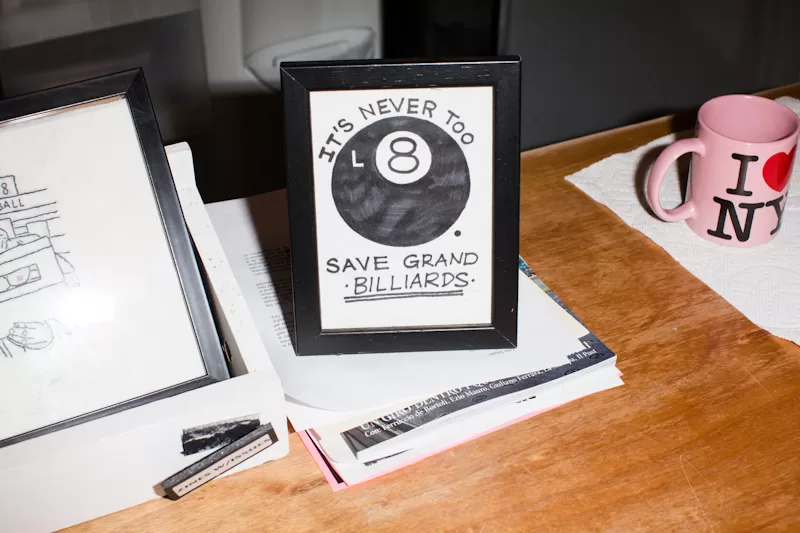
So you moved from Brooklyn to Manhattan, how did that happen?
I know, it’s weird! But I kind of felt the need of moving to the city and working in Manhattan for a little while. I have always been working in Brooklyn and I love it there but I think sometimes it’s refreshing to change landscape, no?
I agree, and how did you find this amazing space?
When Muddguts was closing its doors, some friends of mine had this basement and they wanted to do something with it, so they asked me if I wanted to move in. So in January I came here and this became my studio and 8ball’s headquarters.
What exactly is 8ball and what’s the story behind it?
8ball was founded 2 years ago and I like to describe it as the skeleton of all the projects that I have done in the past years and that have this community-driven nature.
But initially it was a zine fair, right? How did that come to life?
Yes, it was and partially still is. A couple of year ago I managed a bar in East Williamsburg together with some friends. It was a billiard room and pretty much an unknown place, but full of potential. The owner wanted to renovate it, trying to keep up with the hipster gentrification that was going on in the hood. So he asked us to organise events and that’s what we did, almost every day.

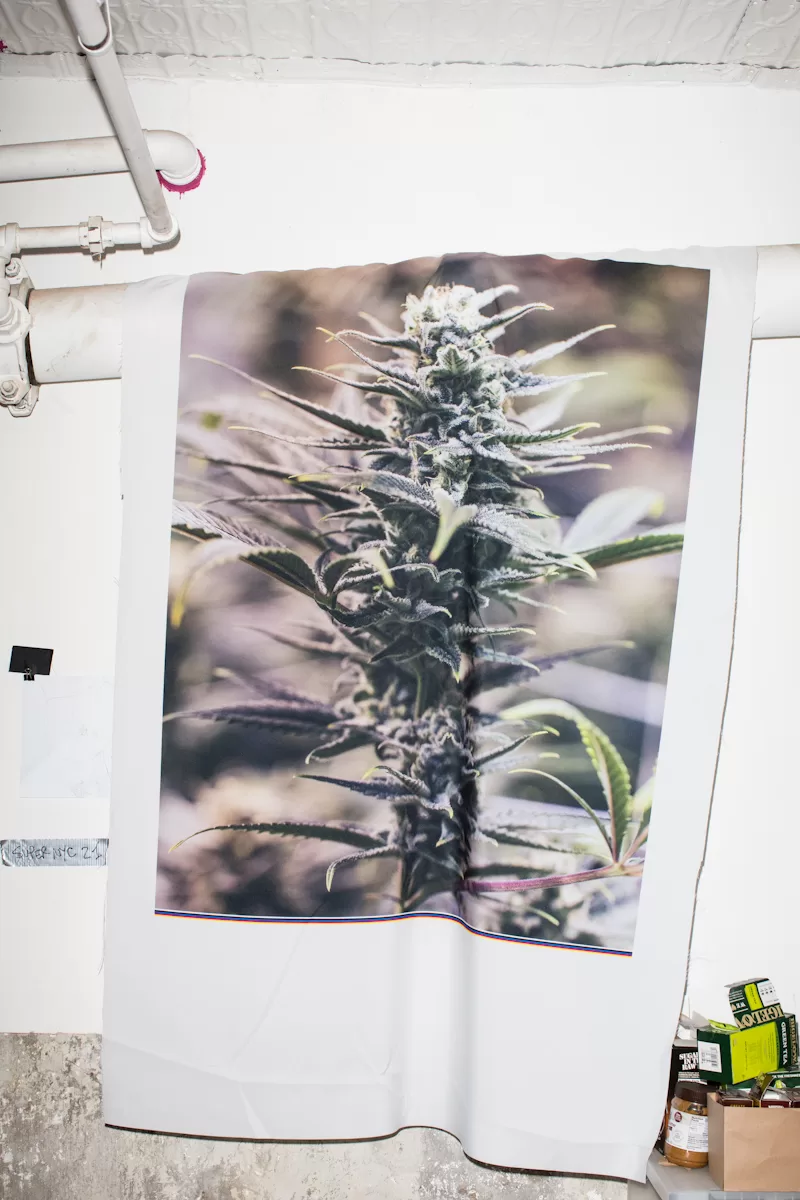
What kind of events?
We would do all sorts of things: exhibitions, screenings, concerts, workshops, lectures etc. Anything, as long as we had new people every time, bringing a little part of their community in the space. All of this went on for eight months or so and one of the latest events that we did was a zine fair in June 2012. That’s where the name 8ball comes from, because of the pool tables where the publishers would exhibit their stuff. That first edition of the fair was a great success. Every one who had attended the events in the months before showed up. It was so much fun and from then on we kept organizing it twice a year.
And it is still in that bar?
No, that place got shut down a little after we left. Now we are organising it in different billiard rooms around the city. The last one was in Korea town.
And has it changed over time or does it still have that old school vibe to it?
Well, it’s still pretty much like the first time we did it. There are some rules that have to be followed. First of all, it always has to be in a billiard room. We always use the pool tables as stands for the exhibitors. We always invite a video artist whose work is then streamed on the TVs that are everywhere in pool rooms. And lastly there always has to be a drop-off table, which is a big pool table at the entrance of the room where visitors can drop off a copy of two of their zine or artworks. This is really important for me.
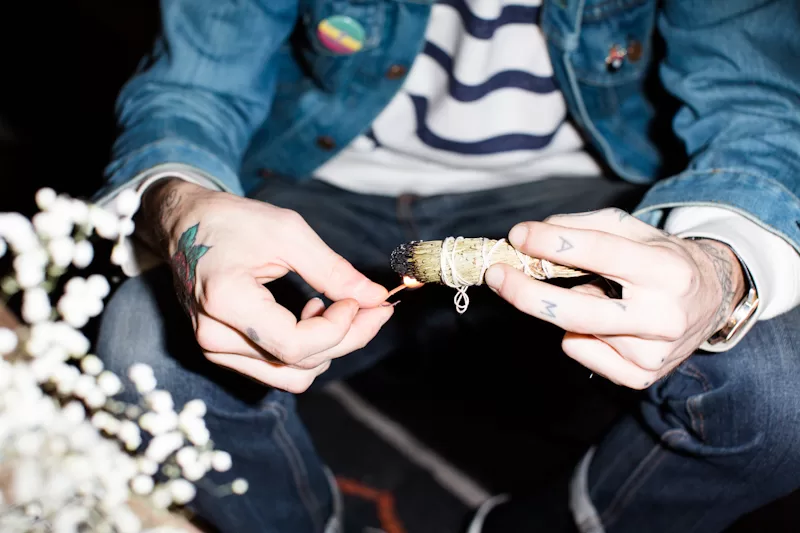
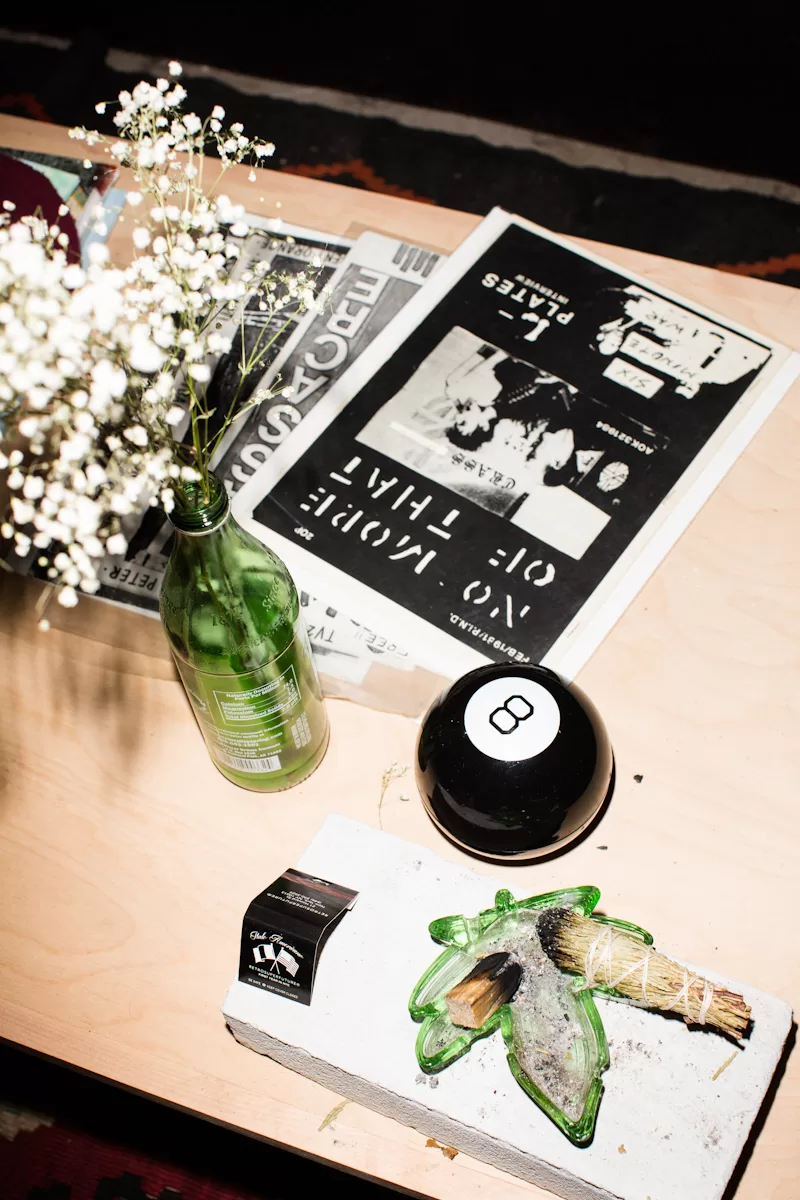
So after that first edition what happened?
Since that one was a great success, we decided to organise another one a couple of months later, in December. Also this time the attendance was amazing. And it’s right at that time that I started to think that a zine fair was something interesting to have in a city like New York.
And is that also the time you started thinking of opening the Newstand at the L/G Lorimer subway stop?
Yes. I was talking with a friend of mine during the second edition of the zine fair. The idea of renting out the newsstand in the train station came pretty naturally. That newsstand (property of the MTA) had been vacant for years, so we thought “what if we rent it out and do the next event there?”
That was a great idea! Also because of the location, Lorimer St is one of the most strategic stations in Brooklyn. So, at the beginning the plan was to rent the Newsstand and do an edition of the zine fair down there. But if I remember well you guys stayed there for much longer than a month, right?
Well, the fair was just the beginning, then the thing got a little out of control and we decided to rent the place for 10 months!
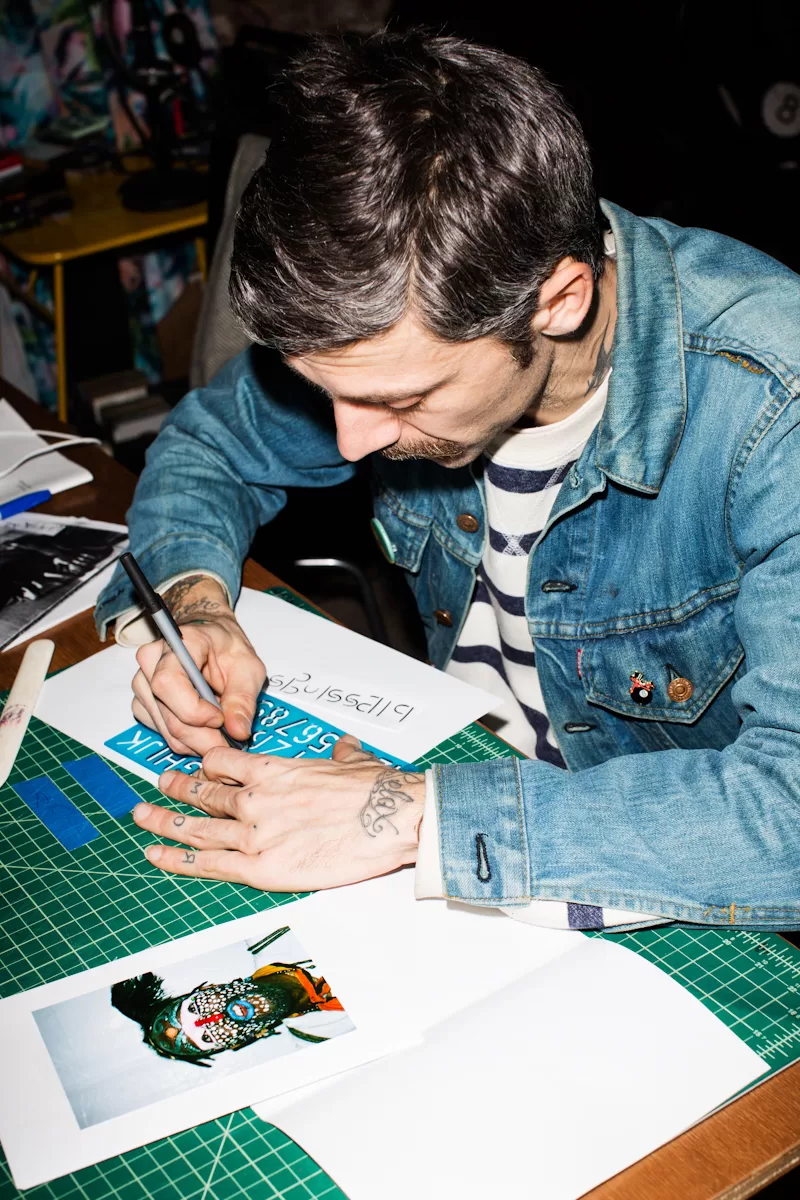
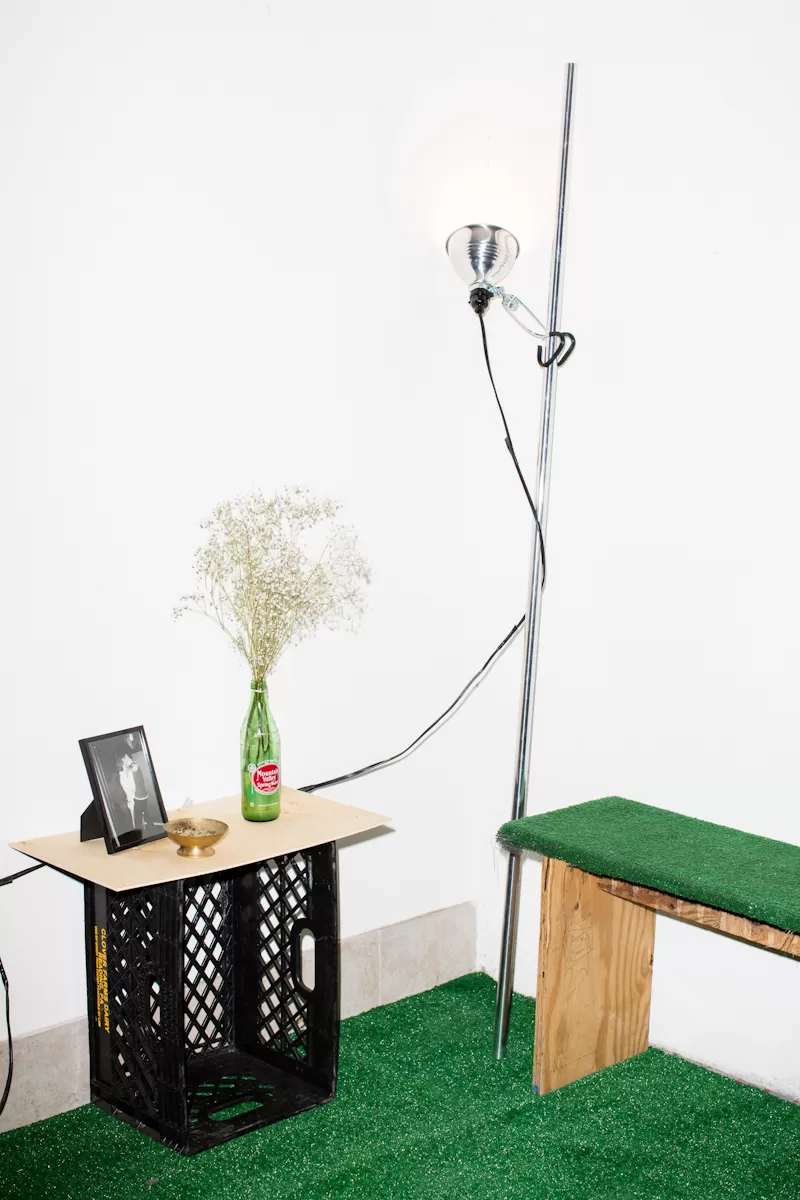
I remember, everyone was talking about it. And what happened in those 10 months? I mean, what kind of events did you decide to organise?
At the beginning it just was meant to be an edition of the zine fair. We showed zines, books and artworks that we selected from the publishers that participated in the past editions. Then we asked some of the independent bookstores in the city (Printed Matter, Dashwood, Desert Island, etc) to curate a box containing zines and books they wanted to show in a place like a subway station. The Newsstand had become a place where on one hand we could show work from these bookstores and on the other (the most exciting for me) we could involve the community by organising shows, events, happenings, workshops.
And it felt so democratic, I mean it was a subway station so everyone could literally walk by and see you guys.
Yes, the participation this time was incredible. And after a while I noticed that so many people would come by and drop off their own zine or artwork. So eventually the space became what the drop-off table was in the earlier edition of the fair; a space where anyone could be involved and leave their own artwork.
So you wouldn’t curate that part, right?
Eventually no because I thought it wouldn’t be fair. The idea of participation is crucial for me and the fact the everyone had the right to walk there and show what they were working on became the point of the project. Basically the newsstand became an archive of works by young artists, and I love this.
I guess you found yourself at the end of the 10 months with so many works and zines!
Oh yes, thousands of them.
And after those 10 months what happened?
Well, it’s during those 10 months that I met crucial friends with whom I am still working on several projects. When we closed the Newsstand I opened that gallery I was talking about a little earlier. It was called Muddguts, in Bushwick.
And now that also Muddguts is gone and you moved to this new space what are you thinking of doing next?
Now I see this new space as a ‘space in transition’. First of all, being in Manhattan is helping me meet new people and work with them on new realities. And this is vital for the communitarian nature of 8ball.
Next projects coming up?
The idea now is to work with public schools in lower Manhattan and organise art/zine-related workshops with kids from high schools.
